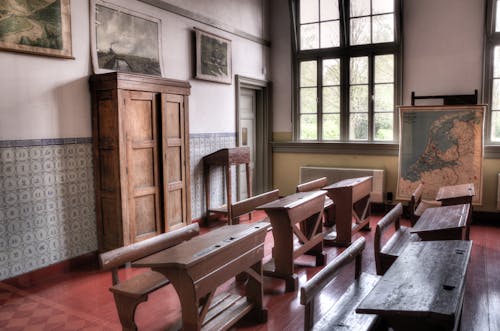Very young children prefer strong colors, but when they grow
older, their taste becomes
more sophisticated and subtle. In most contemporary schools
almost anything that can
be colored is treated in a bright and brilliant way.
Corridor walls, for instance, are
sometimes yellow; rooms facing cool north light are given
warm tones, and those facing
warm south light is given cool tones. The front wall of each of the classroom is often painted
darker than the other walls of the room. Every effort should
be made to select a color that
will be of approximately the same value as the color of the
chalkboard so as to minimize
eye fatigue.

If colors are pastels. bright accents are employed for
furniture and accessories- say
bright blue, yellow, red, or blue-green. Doors and
trim are usually darker than the
walls in which. they are located, and painted doors can be
given variation and additional
interest by the use of various colors.

However, while a stimulating atmosphere is desirable in a
teaching situation, care should
be exercised to prevent overstimulation, which may produce
restlessness, tension and
fatigue.

Comments
Post a Comment